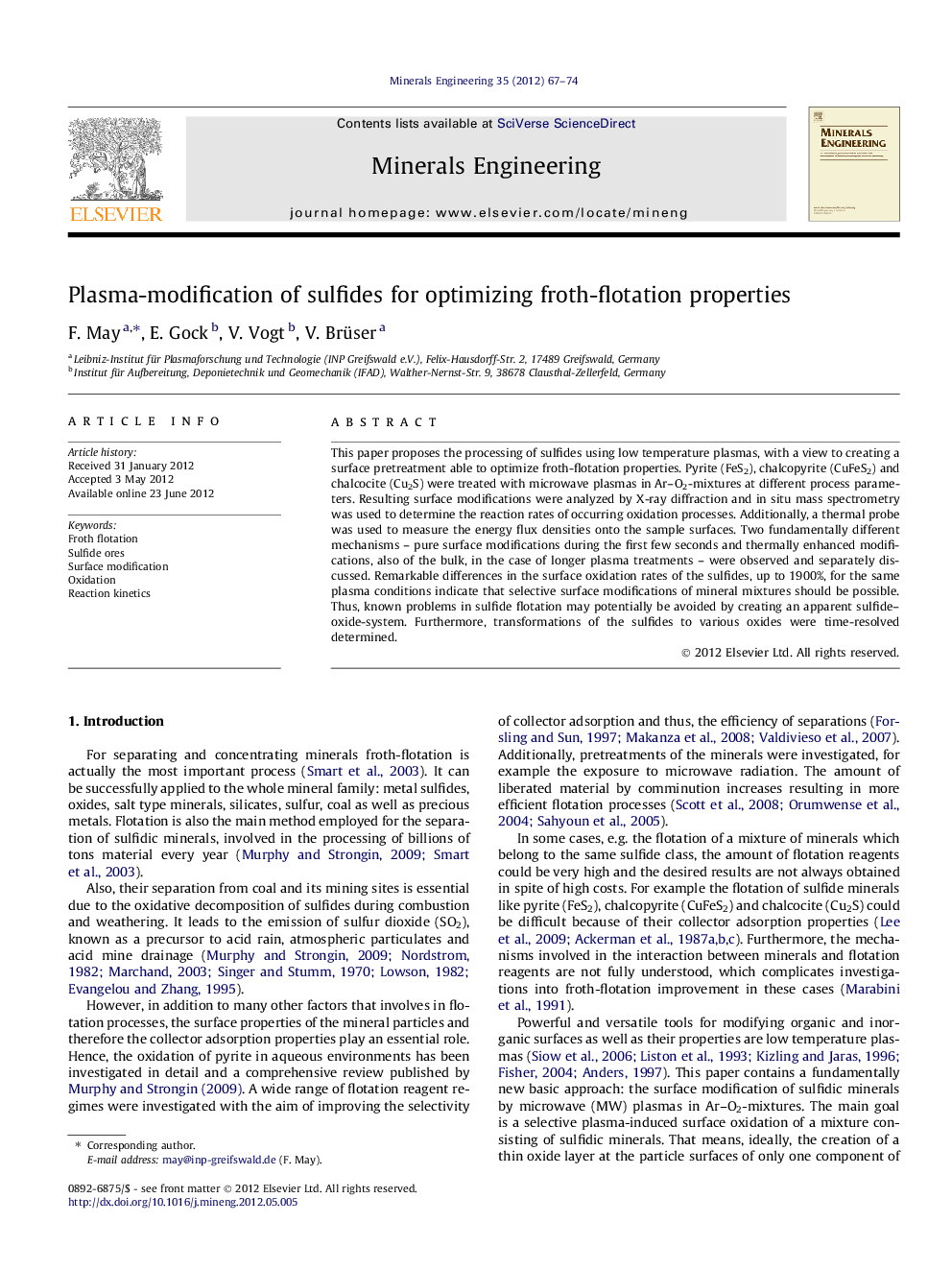| کد مقاله | کد نشریه | سال انتشار | مقاله انگلیسی | نسخه تمام متن |
|---|---|---|---|---|
| 233569 | 465351 | 2012 | 8 صفحه PDF | دانلود رایگان |

This paper proposes the processing of sulfides using low temperature plasmas, with a view to creating a surface pretreatment able to optimize froth-flotation properties. Pyrite (FeS2), chalcopyrite (CuFeS2) and chalcocite (Cu2S) were treated with microwave plasmas in Ar–O2-mixtures at different process parameters. Resulting surface modifications were analyzed by X-ray diffraction and in situ mass spectrometry was used to determine the reaction rates of occurring oxidation processes. Additionally, a thermal probe was used to measure the energy flux densities onto the sample surfaces. Two fundamentally different mechanisms – pure surface modifications during the first few seconds and thermally enhanced modifications, also of the bulk, in the case of longer plasma treatments – were observed and separately discussed. Remarkable differences in the surface oxidation rates of the sulfides, up to 1900%, for the same plasma conditions indicate that selective surface modifications of mineral mixtures should be possible. Thus, known problems in sulfide flotation may potentially be avoided by creating an apparent sulfide–oxide-system. Furthermore, transformations of the sulfides to various oxides were time-resolved determined.
► Surface oxidation of sulfide minerals can be enhanced by low-temperature-plasmas.
► Two fundamentally different oxidations mechanisms are observed.
► The oxidation reaction rates depend on the mineral and the plasma parameters.
► High differences in reaction rates lead to selective surface modifications.
Journal: Minerals Engineering - Volume 35, August 2012, Pages 67–74